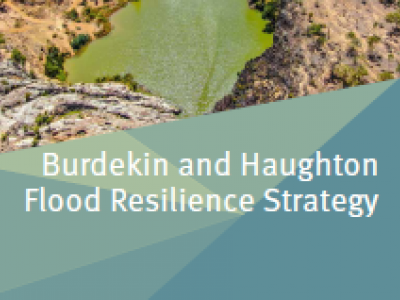Burdekin and Charters Towers Regional Resilience Strategy
The Queensland Government has partnered with the Burdekin Shire Council and Charters Towers Regional Council to deliver the Burdekin and Charters Towers Regional Resilience Strategy which harnesses local expertise to champion a holistic approach to disaster resilience for the region.
This locally-led and regionally coordinated strategy is the result of a co-design process and outlines the shared vision for resilience for the councils of the region, their resilience challenges, opportunities, exposure, risks, pathways to resilience and implementation.
Project background
By 2022, every region across Queensland will be part of a locally-led and regionally-coordinated blueprint to strengthen disaster resilience. These Regional Resilience Strategies and local resilience action plans will help to keep Queenslanders safe by providing a coordinated approach to identify and prioritise disaster resilience actions.
This multi-hazard approach will build on work completed by project partners to develop the Burdekin and Haughton Flood Resilience Strategy (June 2021).
Multi-hazard approach
The Burdekin and Charters Towers Regional Resilience Strategy focuses on supporting local government in the areas of connectivity, infrastructure resilience, social wellbeing, natural resource management, and disaster management resources.
Delivery of Regional Resilience Strategies in Queensland aim to address hazards such as cyclone (severe storm and wind), bushfire, earthquake and heatwave, is a key outcome of Resilient Queensland: Delivering the Queensland Strategy for Disaster Resilience, and is a published commitment under the United Nations Office for Disaster Risk Reduction (UNDRR) Sendai Framework.
Implementation
Implementation of the Strategy will now be overseen by DDSWCOM in partnership the following councils:
- Burdekin Shire Council
- Charters Towers Regional Council.
Resilience Action Plans
QRA has worked with the two councils to develop and deliver Local Resilience Action Plans that will help keep communities safe by providing a coordinated approach to identifying and prioritising disaster resilience actions, and embedding resilience and risk reduction into decision making and investment.
All councils that participated in the co-design process now have a Resilience Action Plan providing a clear forward plan for how we can make lasting change into the future through sustained investment in resilience and mitigation activities. Statewide more than 4,400 local resilience actions have been identified.
These Resilience Action Plans aim to support councils to be as proactive as possible to describe their local resilience needs, and to build a forward program of effort that can be matched to funding opportunities over time as they emerge. The benefit of this is that local communities needs will be well known at all levels of government, and we can progressively deliver on these needs over time.
Map
Related project: Burdekin and Haughton Flood Resilience Strategy
Recent repeated and severe flooding has impacted the properties and livelihoods of those living and working in the Burdekin and Haughton Catchments. To support Queensland communities in their recovery following the North and Far North Queensland Monsoon Trough disaster event from 25 January to 14 February 2019, the $1 million Burdekin and Haughton Flood Resilience Strategy Project was approved as part of the $242 million Disaster Recovery Funding Arrangements (DRFA) Category C and D package jointly funded by the Australian and Queensland Governments.
